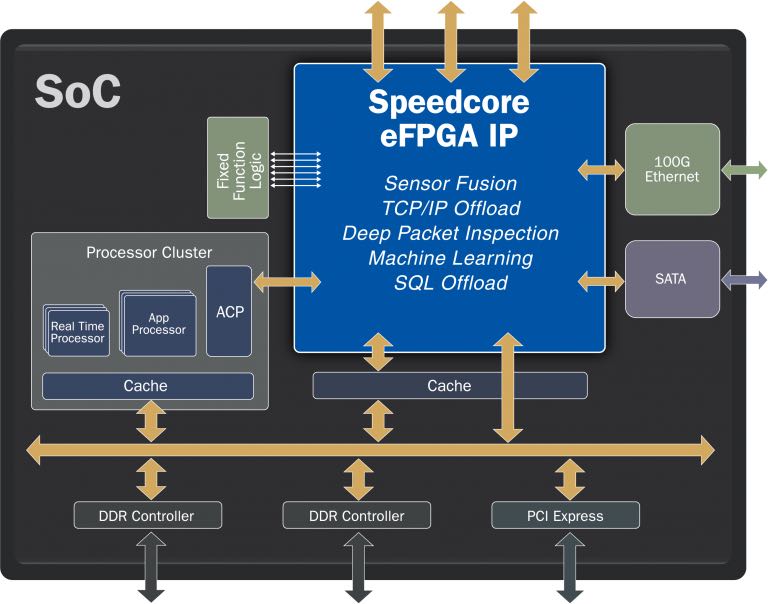If you think the transition to 5G will be anything like the transitions before it to 3G or 4G, you are in for a big surprise. Not only will the transition take longer than either of the previous transitions, its ramifications will spread far beyond cell phones and into other areas such as automobiles, AI, healthcare, and commerce. This is because 5G is not just about higher data rates or carrier efficiency. It will involve multiple bandwidths, a wide range of devices and new modalities of communication. Even though we are approaching its initial implementation, the specification is still in flux and has yet to be finalized. This makes it so that nobody, even the experts, know what 5G really is.
5G is certain to bring big changes in mobile data applications. Many companies are working toward helping to create and enable 5G hardware or to implement solutions that rely on it. One such company is Achronix. Their embedded FPGA fabric – SpeedCore eFPGA – is ideal for dealing with the need to implement 5G systems in the face of changing requirements and specifications. I recently spoke to Mike Fitton, Senior Director of Strategic Planning, at Achronix, who moved there from Intel for exactly this reason. He sees huge opportunities with 5G and understands that Achronix can play a pivotal role.

One of the most interesting areas in 5G is what is called V2X, which is the catch phrase for communications from a vehicle to anything. This includes vehicle to vehicle communication, which can help vehicles negotiate with each other and share alerts about hazards. V2X also includes things like road construction beacons informing cars of reduced speeds or lane diversions. Mike talked about how important URLLC or Ultra Reliable Low Latency Communication will be for these applications. There will be new standards and tightly coupled protocols that will necessarily be evolving. Having the ability to modify algorithms easily without respinning silicon will be extremely helpful. Low latency in communication will also be essential. Mike pointed out that on-chip FPGA fabrics will afford latency on the order of nanoseconds, as opposed to microseconds with off-chip alternatives.
Mike pointed out that everyone was surprised when SMS turned out to be the killer app for communicating with smart phones. It will be just as hard to predict what will be big with the new modes of communication that 5G will bring to the table. Regardless, flexibility will play a big role in developing system based on 5G. Mike and I discussed some examples of how 5G can be utilized. Low power and low bandwidth connections supporting IoT applications can be used to request services automatically over inexpensive and widely available links. For instance, paper shredding bins could automatically message the mother ship to send a mobile shredding truck when they are nearing full. Another example I heard of was where remote fuel tanks for water pumps on farms could signal when they need to be refilled. The savings and increased efficiencies in either of these scenarios are very compelling. This is just a small taste of the new use models that could become practical with the advent of 5G.
The evolution of 5G will be very interesting. At first it will be offered as an assisted mode for LTE, then later we will see a wholesale switch to all the elements of 5G. Necessarily the high frequency, short range component will come later. There are significant technical challenges due to interference and blockages at short wavelengths. Trials for 5G will be starting in 2020. During the initial implementation stages operators and system developers will place a premium on adaptability and the ability to provide quick updates to address unforeseen issues. Achronix is sure to play a role in this market with SpeedCore eFPGA’s combination of low power, high performance and rapid reconfigurability. For more information on how embedded FPGA fabric can facilitate 5G implementation, take a look at the Achronix website.
Share this post via:





Comments
There are no comments yet.
You must register or log in to view/post comments.